When some future author writes a book about the most influential cars in automotive history, the Nissan LEAF will be right up there with the Model T, the VW Beetle and the Tesla Model S. The LEAF was the first EV aimed at the mass market, and as of this writing, it remains the best-selling in history, with over 280,000 units sold worldwide.
Now it’s time for a new generation. GM and Tesla have thrown down the gauntlet with the Bolt and Model 3, and Nissan has responded with the redesigned 2018 LEAF. The new Nissan doesn’t match the range of the Chevy or the Tesla, but its lower price could make it an attractive alternative for the many drivers who don’t really need that much range.
The new LEAF went on sale in Japan at the beginning of October. It’s scheduled to arrive in the US in early 2018, and will be available in all 50 states right away. The European rollout will begin about two months later.
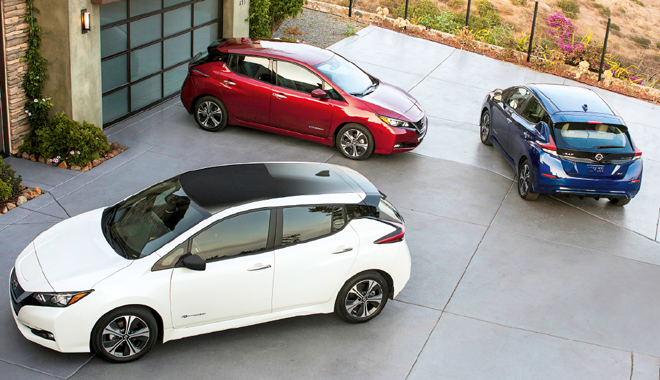
Charged spoke with Michael Arbuckle, Nissan’s Senior Manager of EV Sales and Marketing Strategy, and Josh Clifton, Senior Manager of Product Communication. They told us that customer feedback drove the LEAF’s redesign process. There are many small improvements – for example, the charging port is now angled so you can plug in the charger without bending over – but overall it seems that buyers are pretty happy with the existing LEAF. They asked for a little more range and a little more power, and Nissan delivered.
The biggest change is the LEAF’s exterior, which Nissan has completely redesigned to make it look more “mainstream.” Fans may bemoan the loss of the LEAF’s distinctive protruding headlights (which were designed to improve aerodynamics) and prominent haunches, but Nissan is betting that, as EVs move out of the early adopter phase, buyers will be reassured by a vehicle that looks pretty much like other current Nissan models.
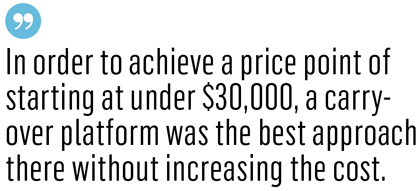
Nissan resisted the temptation to make huge performance improvements and add fancy new features that would have driven up the price. Building the new LEAF on the same platform allowed it to keep the price around $30,000 – several thousand less than the Chevy Bolt or the Tesla Model 3. “We still want to keep a good price point,” said Arbuckle. “We really looked at a balance between range and price and technology on this vehicle. In order to achieve a price point starting at under $30,000, a carryover platform was the best approach there without increasing the cost.”
That doesn’t mean the new LEAF is a stripped-down vehicle – on the contrary, it incorporates a host of new driving and safety features. And a further substantial increase in range is in the pipeline.
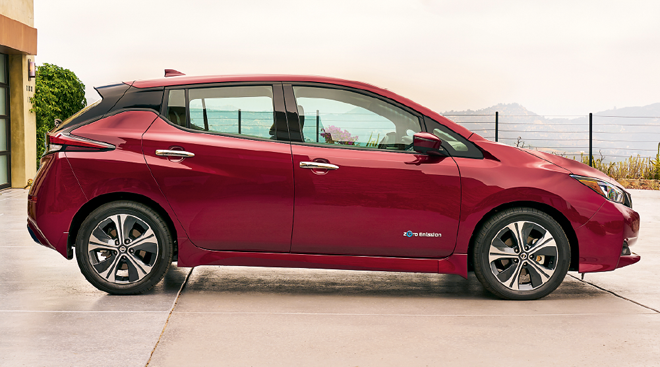
A little farther, a little faster
The LEAF’s range has crept steadily upward over its lifetime. The original 2011 LEAF had an EPA-rated range of 73 miles. Changes to the way regulatory agencies measure range have made any year-by-year comparison meaningless, but improvements to the heating system and other small tweaks have resulted in incremental gains. In terms of the battery, the new LEAF represents a third generation – for model year 2016, Nissan increased the battery size from 24 kWh to 30 kWh. The new 2018 LEAF has a 40 kWh battery pack that’s expected to deliver 150 miles of “real-world driving.”
The new LEAF uses basically the same powertrain as the old, but performance has been improved substantially. The battery pack has the same number of cells, and the same form factor, but improvements in battery chemistry have resulted in higher energy density, increasing capacity from 30 kWh to 40 kWh.
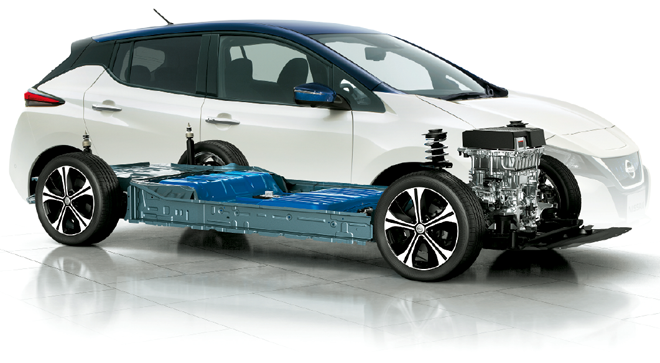
For the 2019 model year, Nissan plans to offer a new 60 kWh battery pack that will deliver over 200 miles of range. This will be a larger pack, requiring some modifications to the vehicle’s body, and that’s widely assumed to be the reason that Nissan went ahead and released the 40 kWh pack first, and gave itself another year to prepare for its entry into the 200-mile club.

The new LEAF uses the same front-mounted synchronous motor as the old, but improvements to the hardware and software of the inverter (namely, better cooling performance and increased efficiency of voltage utilization) have enabled the power to be increased by 37% to 110 kW, and torque to be increased by 26% to 352 N·m (264 ft·lb).
“Overall it’s a faster off-the-line response with this LEAF,” said Arbuckle. “It handles better, is a little bit quicker.”
Bells and whistles
The ProPILOT Assist driver assistance system, which made its debut on the 2018 Rogue, represents Nissan’s first step towards autonomous driving. It relies on a single forward-facing radar and a monocular video camera. According to Nissan, it “reduces the hassle of stop-and-go driving by helping control acceleration, braking and steering during single-lane highway driving.” It’s basically adaptive cruise control plus automatic lane-keeping. Early reviewers have found that it functions very well in the highway traffic jams that plague our cities.
The new LEAF also features Nissan’s Safety Shield technology, which includes various driver assistance functions. Automatic Emergency Braking is standard on all three trim levels, whereas Blind Spot Warning, Intelligent Cruise Control, Intelligent Around View Monitor and other features are included on the higher trim levels, and/or available as options.
Another addition is a driver-selectable one-pedal driving mode called e-Pedal, which is standard across all three trims. The current LEAF has a B gear, in which the regenerative braking is stronger than in D, but the effect of e-Pedal is more noticeable.
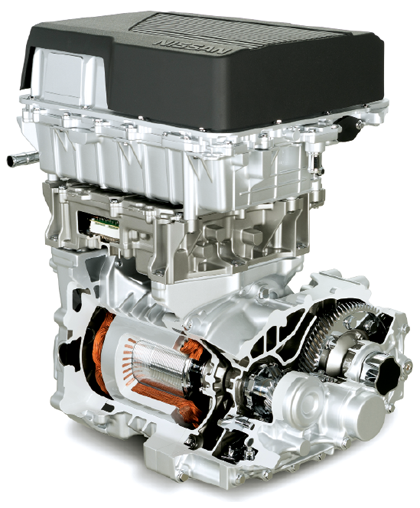
“When you have it e-Pedal mode, as you let off [the accelerator] it will start to brake the vehicle and it will bring you to a complete stop if you let off completely,” says Arbuckle. “Of course it is a progressive stop, [not] like you slammed on the brakes, but it will bring you to a complete stop. The real benefit is in stop-and-go traffic – you’re not going back and forth between the brake pedal and the accelerator pedal, so it relieves a lot of stress. It’s also really fun to drive when you’re out on the highway.”
Charging ahead with CHAdeMO
For some time, a battle raged between the CHAdeMO DC fast charging standard used by Japanese and Korean automakers and the CCS standard favored by US and European brands. Nissan feverishly built public chargers all over the world, apparently to create facts on the ground and assure the victory of CHAdeMO. Lately, it seems that CCS is gaining the upper hand – the Hyundai Ioniq Electric is the first Korean EV to use CCS. On the other hand, most of the public fast chargers being installed nowadays support both standards, so the battle may effectively be over.

“We always investigate and always study future products and future abilities to charge, but right now, for the foreseeable future it is CHAdeMO,” said Arbuckle. “We continue to invest in public charging with CHAdeMO. We have over 51 markets today throughout the country that we focused on. Now it’s about building out those markets and then identifying additional markets and starting to build infrastructure there.”
Wither the federal tax credits?
Considering the current mood in Washington, the existing federal tax credits for EV purchases are on very shaky ground – as we go to press, the battle to eliminate them is still going on (UPDATE: Incentives for EVs survived congressional conferences and were not eliminated in the $1.5 trillion tax overhaul signed by President Trump in late December). In any case however, the credits are designed to be phased out for each individual automaker once it has delivered a certain number of EVs. Will LEAF buyers be losing that credit any time soon, and how will that affect sales?
“The tax credits begin to phase out when the OEM achieves 200,000 EV sales,” Arbuckle explains. “Right now, we’re at just over 112,000 here in the US, so that is something that we have in our plan, understanding that [the credit] may not continue. Incentives always help, especially with the adoption of new technology. [However,] as battery prices start to come down, that’s going to help as different federal or state tax credits are phased out.”
In 2015, the state of Georgia eliminated a $5,000 tax credit for EV purchases that it had previously offered, and imposed a yearly user fee of $200 for every passenger EV. The impact on EV sales was dire. “We went from Georgia – specifically Atlanta – representing about 80% of our US sales to about 7% of our sales once that tax credit went away,” says Arbuckle.
This all sounds great, but what about marketing?
Charged and others in the EV press have often commented on the disappointing lack of marketing that major automakers have been doing for their EVs. Car ads are everywhere, but EVs are seldom mentioned – even in those “gang’s all here” ads in which Nissan’s whole lineup is shown boldly racing down the highway, the LEAF is absent, like an unloved stepchild. Arbuckle defends Nissan’s decision to eschew mainstream ads for the LEAF in favor of more targeted marketing. “One thing you saw early on with the LEAF was a lot of tier-one advertising, [but] over the last couple of years we’ve realized that to strategically focus our awareness and marketing in key markets and key opportunity markets has actually helped a lot more. Our sales have increased year-over-year for 12 months consecutively through September of 2017. That’s through being very strategic with our marketing. I can’t speak for other manufacturers, but that’s one thing that we’ve found very beneficial.”
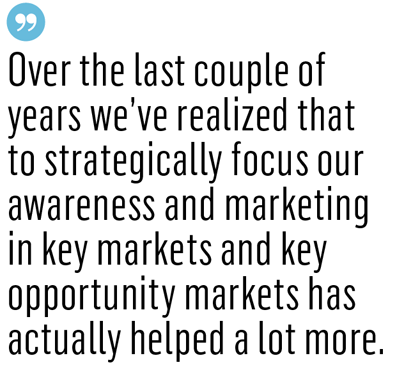
Targeting key markets instead of taking a shotgun approach “makes our marketing funds go a little bit further. Frankly, marketing out to Idaho or some of those Midwestern states that don’t have a large EV adoption or opportunity, it doesn’t make a whole lot of sense at this point in time. As we go into the future, and as we start seeing a larger adoption in the middle of the country, more infrastructure and longer-range batteries, then of course it makes a little bit more sense to go to nationwide, tier-one marketing at that point.”
Another disappointment has been dealerships, where personnel are often unfamiliar with EVs, or even discourage buyers from considering them. Arbuckle agrees that this is a problem. “You’re exactly right, because with any vehicle, you could have all the advertising, all the awareness in the world, but if a customer walks into the dealership, if they have a bad experience, if the dealership’s not knowledgeable, then you’ve lost the sale. That customer walks out of the dealership and goes to a competitor.”
“One of the things that we’ll continue to heavy up on for model year 2018 is training our dealers, focusing on key markets to make sure those dealers are trained and ready to go first, and then expanding out to our secondary markets and driving awareness with those dealers, the ones that really haven’t been engaged, to get them on board so they can help with talking about the LEAF as customers are coming into the showroom.”
“Beginning with model year 2018, we’re going to be going out and doing a full-line campaign of training for our dealerships: technical training, sales consultant and sales manager training, to ensure that everybody’s trained and ready to go for the launch of the new vehicle. Even those dealerships that have sold the vehicle in the past and been highly engaged, it’s about getting them accustomed to this new vehicle, the new features, the new technologies.”
“We do a round of training at our technical facilities – we have eleven throughout the country. We’ll bring technicians and dealership management in, and we’ll give them a full-day seminar on the vehicle. Then we’ll go out to our dealerships and we’ll do in-dealership training, focusing on the sales consultants and sales managers. We’re letting them touch the vehicle, teaching them about the features and also [letting them drive] the vehicle so that they’re fully aware of the features that it has. They fully understand the vehicle’s capabilities and then they can speak intelligently to the customers.”
One region at a time
The new LEAF will not have a phased rollout – it will be available in all 50 states right away. However, Nissan does follow a regional strategy, concentrating on its most successful markets, while working to open up new ones. Unsurprisingly, today’s primary markets for the LEAF are on the rapidly-electrifying West Coast, including San Francisco, Los Angeles, San Diego, Seattle and Portland. Denver is a new frontier, thanks to Colorado’s new $5,000 point-of purchase tax credit. “There’s a lot of opportunity in that market,” says Arbuckle. Atlanta is still an area of interest, even though Georgia got rid of its state tax credit. “There are still a lot of owners in Atlanta that we’re really focusing on from a loyalty aspect.”
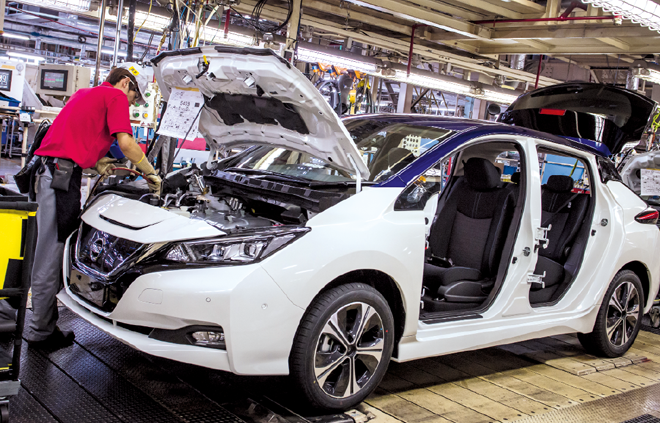
“In the Northeast, we’ve really focused on building out and expanding awareness, and we’ve had quite the success in Connecticut, New York, New Jersey and Washington DC.”
In emerging EV markets, Nissan concentrates on “driving awareness, getting potential customers in the seat so they can drive the vehicle,” says Arbuckle. “That’s one of the biggest things about EVs – there’s kind of that ‘aha!’ moment when a customer gets behind the wheel and drives it. They feel the off-the-line acceleration, the torque that they didn’t expect. It’s actually cool to drive, and that’s when we really start to see customers switch over into more of an adopter, so there’s been a lot of focus on making sure that we get the word out, get customers behind the wheel of the vehicle.”
This article originally appeared in Charged Issue 34 – November/December 2017 – Subscribe now.




















































































